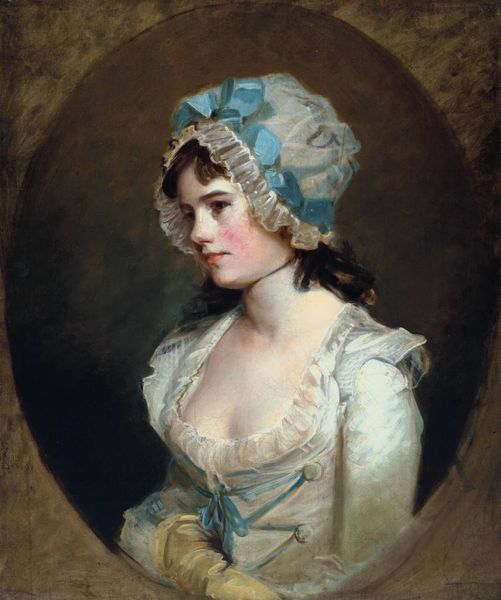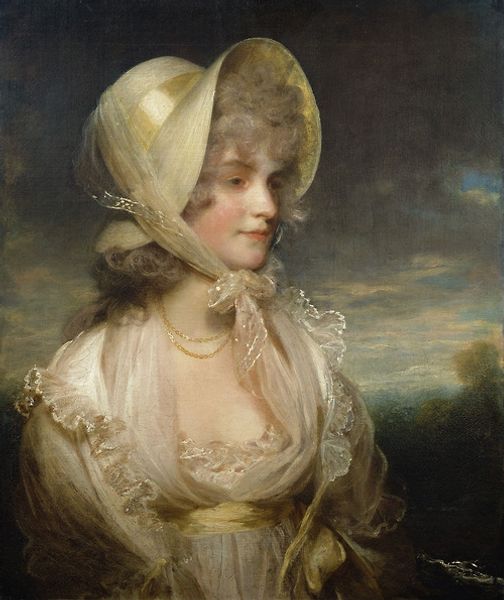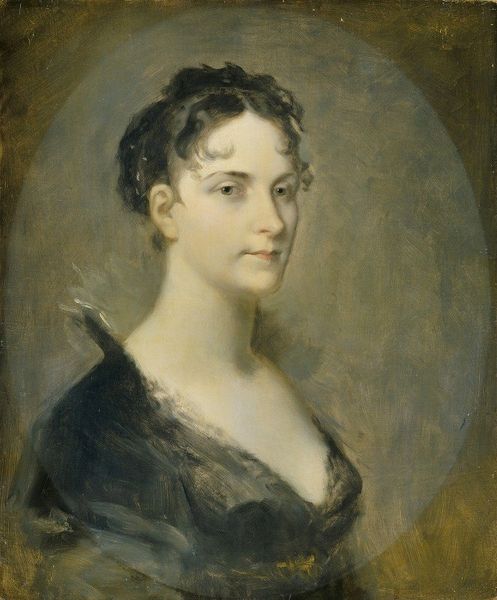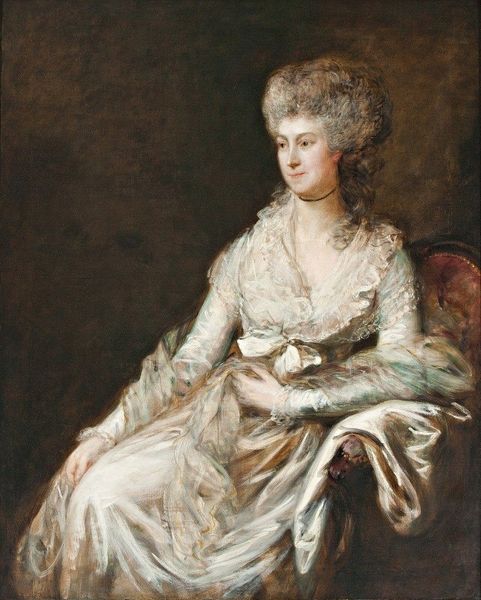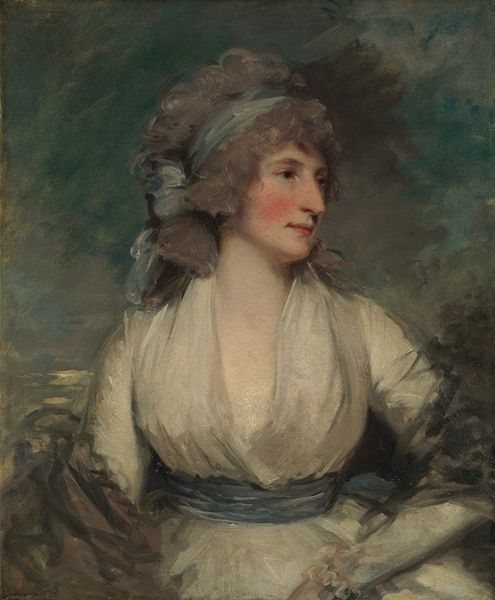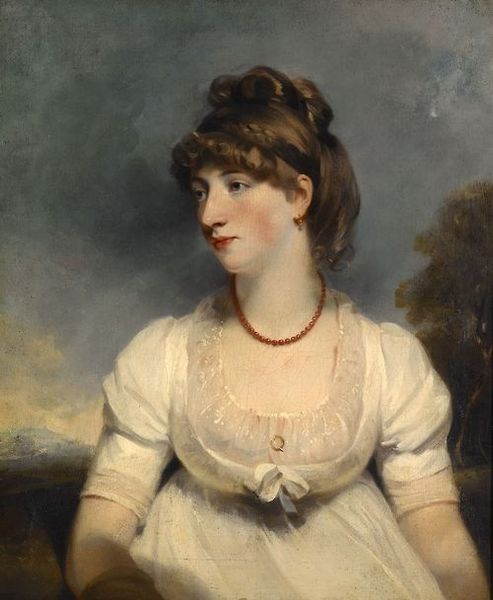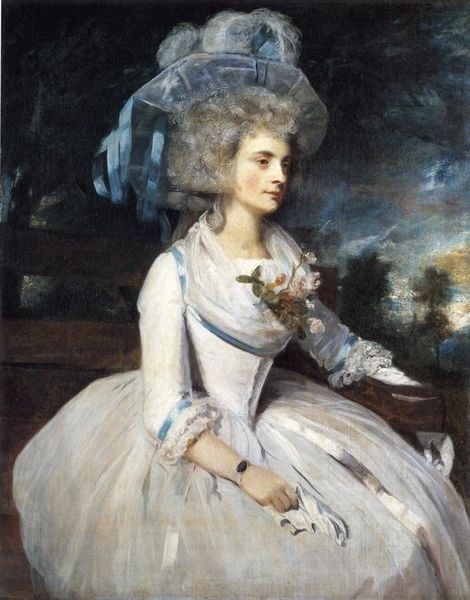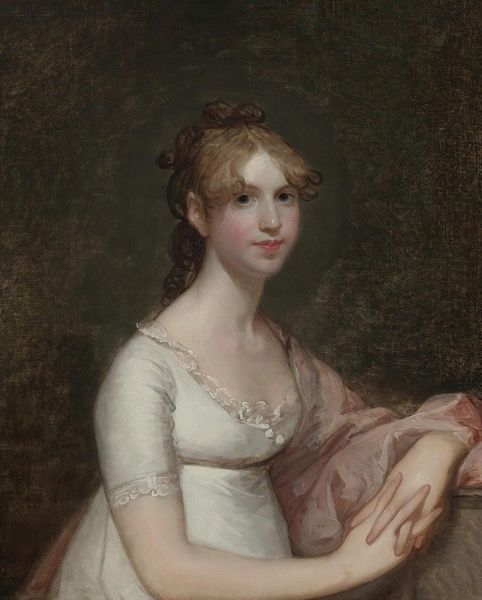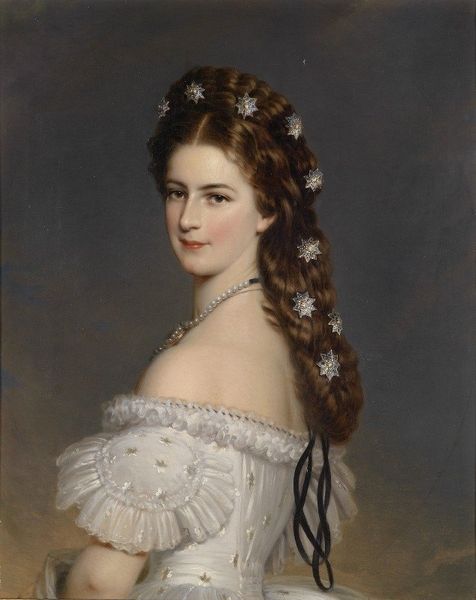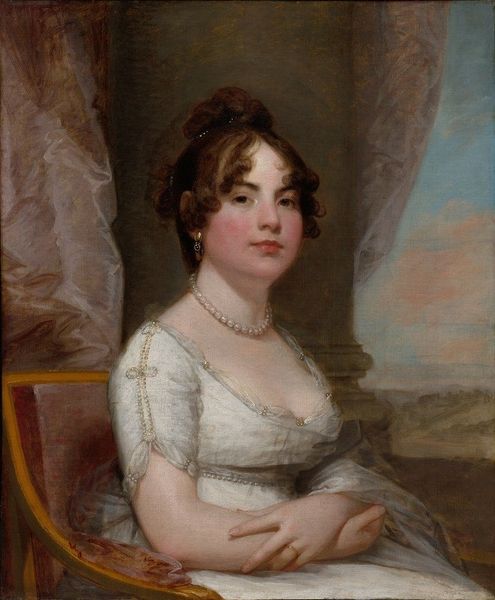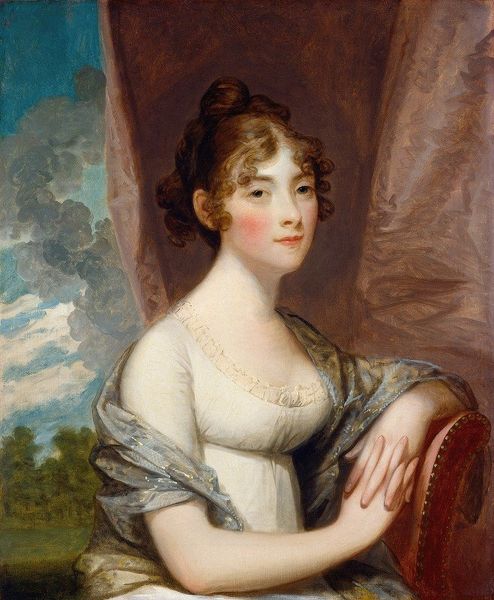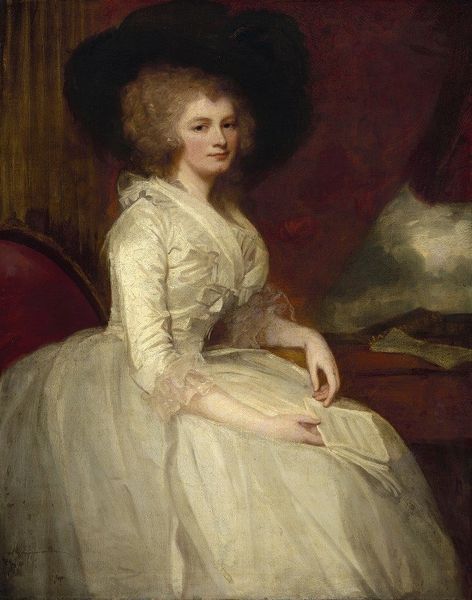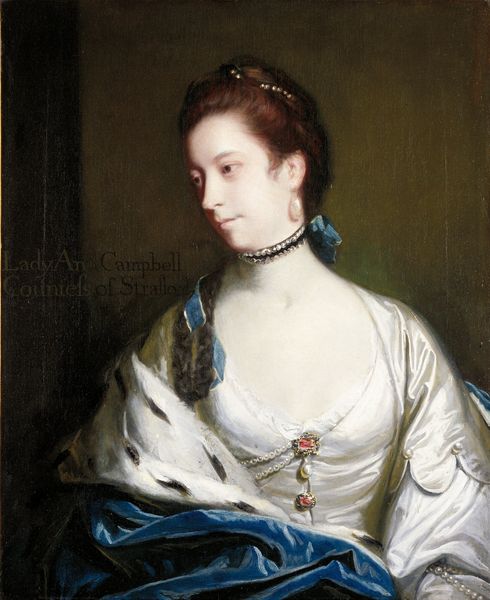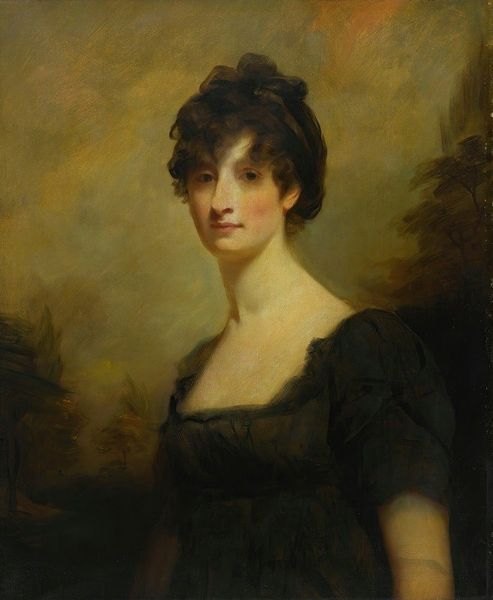
painting, oil-paint
#
portrait
#
figurative
#
painting
#
oil-paint
#
figuration
#
romanticism
Copyright: Public Domain: Artvee
Curator: Good morning, and welcome. We’re standing before John Linnell's oil painting, “Portrait of a Woman, Probably Mrs. Price of Rugby,” created around 1835. Editor: Immediately, I’m struck by its softness. The pastel dress seems almost to glow against the muted background. It evokes a quiet, contemplative mood. Curator: That softness comes, I think, from Linnell's application of paint, a certain feathery touch. The brushstrokes aren’t concealed; you can really see the labor of creating this representation of wealth and status. I wonder about the production of the pigment itself and the social status associated with portraiture at this time. Editor: Absolutely. Consider also the subject—likely Mrs. Price. While she projects an air of calm domesticity, one has to recognize her identity as fundamentally enmeshed with Victorian patriarchy. We're witnessing a construction of ideal womanhood. Curator: Exactly. But even more specifically, consider the craft. The details of the dress, for instance; it would have taken many hours, not just for the artist to portray it but for seamstresses and labourers to construct. Are these makers considered, do we know anything of their life and craft in a broader art historical setting? Editor: These considerations prompt questions about class. Mrs. Price, likely part of the emerging professional middle class, displays a specific image. But behind her "accomplishment" lies invisible, often exploited, labor. And her clothing, that signifier of her position, only emphasizes that dynamic. Curator: I suppose viewing art through this lens is useful, and while this piece feels overtly straightforward, knowing that these visual markers conceal unseen work adds another dimension. Editor: Right, It highlights art as both aesthetic object and a product of societal structures and power dynamics. Seeing artwork like these portraits, and considering labor practices and historical context allows me a more informed understanding of social structures and identity then, as well as today. Curator: A reminder that the art object is never isolated from its historical processes of creation. Thank you. Editor: Indeed. It all is interconnected.
Comments
No comments
Be the first to comment and join the conversation on the ultimate creative platform.
